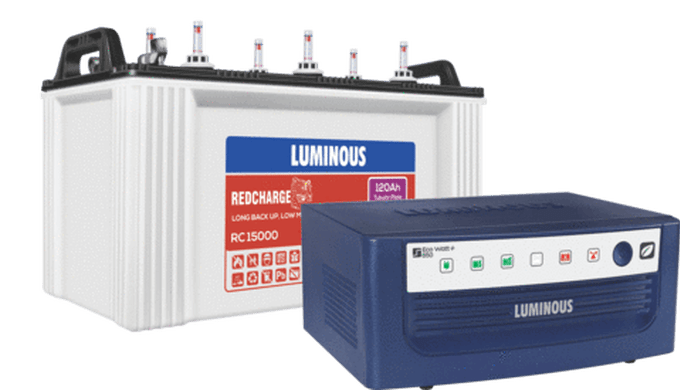Power Up: Unleashing the Full Potential of UPS Batteries
Power Up: Unleashing the Full Potential of UPS Batteries
Blog Article

In today's fast-paced world, ensuring that our devices remain powered is more crucial than ever. Whether it's for home, business, or critical systems, having a reliable power source is key to maintaining productivity and preventing data loss. This is where UPS batteries come into play. These uninterruptible power supply units not only provide an immediate backup when the power goes out, but they also help manage power surges and protect sensitive equipment from damage.
Uninterruptible Power System
Understanding the potential of UPS batteries can greatly enhance their effectiveness and increase the longevity of the devices they support. With a variety of options available on the market, knowing how to choose and maintain UPS batteries to maximize their performance is essential. From the technology behind them to best practices for maintenance, unlocking the full potential of your UPS battery system can lead to greater efficiency and peace of mind in an increasingly power-dependent world.
Understanding UPS Batteries
UPS batteries are essential components in uninterruptible power supplies, serving as the backbone of power reliability systems. Their primary function is to provide backup power during outages, ensuring that critical devices and systems remain operational. These batteries come in various types, including lead-acid, lithium-ion, and nickel-cadmium, each with its advantages and applications. Understanding the differences among these types can help users select the most suitable option for their needs.
The longevity and performance of UPS batteries are significantly influenced by factors such as usage, charging cycles, and environmental conditions. Regular maintenance and monitoring are crucial to maximize their efficiency and lifespan. For instance, lead-acid batteries typically require periodic equalization charges to prevent sulfation, while lithium-ion batteries offer longer life and require less maintenance. Being aware of these factors can aid in making informed decisions about battery management.
Additionally, advancements in technology have led to improvements in UPS battery design and performance. Newer models feature smarter battery management systems that enhance efficiency and reduce energy loss. Innovations such as advanced charging algorithms and temperature compensation help optimize battery health and performance in varying conditions. Understanding these technological developments is vital for users looking to harness the full potential of their UPS batteries and ensure a reliable power supply.
Maintaining Peak Performance
To ensure that UPS batteries operate at their best, regular maintenance is essential. This involves checking the battery's physical condition for signs of wear, such as corrosion or bulging. Keeping the terminals clean and tight can prevent connectivity issues that may reduce the battery's efficiency. Additionally, it’s important to monitor the ambient temperature where the UPS is installed, as extreme temperatures can adversely affect the battery’s lifespan and performance.
Another crucial aspect of maintaining UPS batteries is conducting periodic tests to assess their health. Most UPS systems come with built-in self-diagnostic features that can help identify any potential issues before they escalate. Performing regular load tests simulates real-world conditions, providing insights into how long the batteries can sustain power during an outage. Timely diagnostics can lead to early replacements, ensuring uninterrupted service and reliability.
Lastly, keeping batteries fully charged is vital for peak performance. UPS systems automatically recharge their batteries when not in use, so it's important to ensure they aren't overly discharged or left inactive for extended periods. Implementing a practice of optimal charging, which includes top-off charging and avoiding deep discharges, can significantly extend the service life of the UPS batteries. Proper use and care will yield maximum efficiency and reliability in your power protection setup.
Maximizing Lifespan
To maximize the lifespan of UPS batteries, it is essential to maintain optimal environmental conditions. Heat is a significant enemy of battery health, so keeping the UPS unit in a cool, dry place can dramatically improve its longevity. Ideally, the ambient temperature should be kept between 20 and 25 degrees Celsius. Regularly checking for dust accumulation and ensuring proper ventilation can help in preventing overheating, which can cause premature battery failure.
Proper usage and regular maintenance are also crucial for extending the life of UPS batteries. It is recommended to avoid deep discharges, as repeatedly draining the battery down to low levels can shorten its life. Instead, it’s better to keep the battery charged between 40 and 80 percent of its capacity. Conducting routine maintenance checks, including inspecting the battery terminals for corrosion and ensuring all connections are secure, can help in identifying potential problems before they lead to battery failure.
Finally, investing in high-quality batteries and adhering to the manufacturer’s guidelines for usage can make a significant difference in longevity. Different types of UPS batteries have varying lifespans and performance characteristics, so choosing the right type for specific needs is vital. Additionally, replacing batteries according to the recommended schedule, even if they seem to be performing well, can prevent unexpected outages and ensure that the UPS operates at peak efficiency for as long as possible.
Report this page